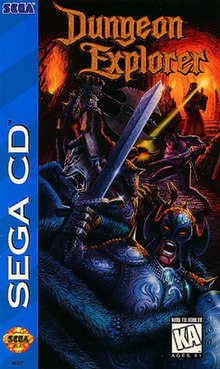
Dr. Robotnik's Mean Bean Machine is a falling block puzzle game developed by Compile and published by Sega. It was released for the Sega Genesis / Mega Drive in North America and Europe in November 1993, and ported to the Game Gear in 1993 and Master System in 1994.

Raiden is a 1990 vertically scrolling shooter arcade video game developed by Seibu Kaihatsu and published by Tecmo in Japan. The game's story takes place in the year 2090, when an alien species known as the Crystals invaded Earth. Players assume the roles of the Vanquish Crystal Defense pilot duo, taking control of two state of the art Fighting Thunders aircraft to defeat the Crystals and save the Earth.
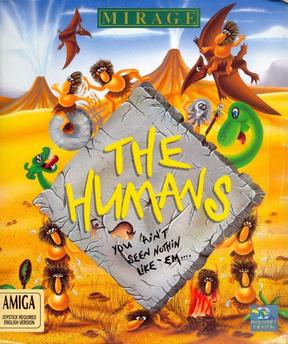
The Humans is a puzzle-platform video game developed by Imagitec Design in Dewsbury, England and originally published by Mirage Technologies for the Amiga in May 1992. It was later ported to other home computers and consoles. The goal of the game varies per level but usually revolves around bringing at least one of the player-controlled humans to the designated end area marked by a colored tile. Doing this requires players taking advantage of the tribe's ability to build a human ladder and use tools such as spears, torches, wheels, ropes and a witch doctor in later levels.
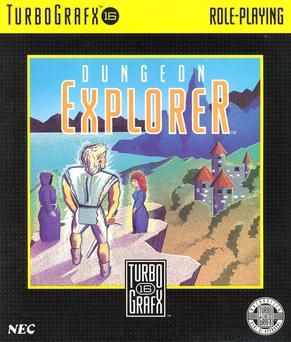
Dungeon Explorer is an action role-playing video game developed by Atlus for the TurboGrafx-16 and originally published by Hudson Soft in Japan on March 4, 1989, and later in North America by NEC on November 15 of the same year. The first installment in the eponymous franchise, the game is set in the land of Oddesia, which has been overrun by an alien race and where players assume the role of one of eight main characters tasked with recovering the Ora stone to kill the alien king Natas. Co-directed by Kazutoshi Ueda and Yōsuke Niino, the title was created by most of the same team that would work on later several projects such as entries in the Megami Tensei series. Though it was initially launched for the TurboGrafx-16, it was later re-released through download services for various consoles.

Lunar: Eternal Blue is a role-playing video game developed by Game Arts in association with Studio Alex for the Sega CD as the sequel to Lunar: The Silver Star. The game was originally released in December 1994 in Japan, and later in North America in September 1995 by Working Designs. Eternal Blue expanded the story and gameplay of its predecessor, and made more use of the Sega CD's hardware, including more detailed graphics, longer, more elaborate animated cutscenes, and more extensive use of voice acting. Critics were mostly pleased with the title, giving particular merit to the game's English translation and further expansion of the role-playing game genre in CD format.

Sexy Parodius is a 1996 horizontal-scrolling shooter arcade game developed by Konami. It is the fifth installment of the Parodius series. Like the rest of the series, it is a parody of the Gradius series and other Konami games. It also contains sexual level and enemy designs, as well as risqué innuendo. Many level bosses are women in various erotic costumes or various states of undress.

Light Crusader is an action-adventure game developed by Treasure and published by Sega for their Sega Genesis console in 1995. The game was included in the Sega Genesis Classics collections on Steam and other platforms in 2011. It was also included on the Sega Genesis Mini in North America and Sega Mega Drive Mini in PAL regions.
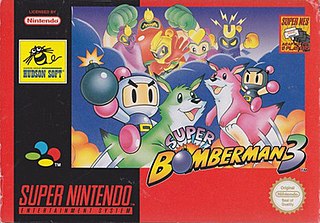
Super Bomberman 3 is a game released for the Super Nintendo Entertainment System in 1995. It is the third installment in the Super Bomberman series, and the third Bomberman game to be released for the system. Up to five players can play at the same time. The game was released in Japan and the PAL region, but not in North America due to the closure of Hudson Soft USA.

The Wonder Boy series, also known as the Monster World series, is a franchise of video games published by Sega and developed by Westone Bit Entertainment. Beginning with the original Wonder Boy arcade game released in April 21, 1986, the game has spawned several sequels released for arcade, Master System, and Sega Genesis, as well as three compilation titles and three remakes by other developers. Several titles have been ported to other consoles by different publishers under different names, most notably Hudson Soft's Adventure Island adaptation of the original game. The main character "Wonder Boy" was named Book by the developer and Tom-Tom by Sega for overseas editions.

Soulstar is a hybrid rail shooter/third-person shooter video game developed and originally published by Core Design for the Sega CD in Europe in April 1994, then in North America by Time Warner Interactive in September, and later in Japan by Victor Entertainment on December 22.
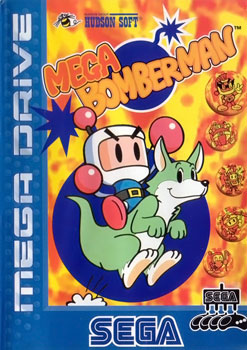
Bomberman '94 is a video game from the Bomberman series which was developed and published by Hudson Soft for the PC Engine and released on December 10, 1993, in Japan. It was later re-developed by Westone and re-published by Sega as Mega Bomberman on the Sega Mega Drive/Genesis in 1994 in other areas. The PC Engine Bomberman '94 was later released outside Japan through the Virtual Console and the PlayStation Network.

Valis II is a 1989 action-platform video game originally developed by Laser Soft, published by Telenet Japan and NEC for the PC Engine CD-ROM²/TurboGrafx-CD. A home computer version was released for PC-8801, MSX2, PC-9801 and X68000. A super deformed-style remake was also released in 1992 for the Sega Mega Drive/Genesis. It is the second entry in the eponymous series. It stars Yuko Asou, a Japanese schoolgirl teenager chosen to become the Valis warrior by wielding the titular mystical sword, after defeating the demon lord Rogles. The dream world Vecanti fell under the rule of emperor Megas, whose hatred towards his brother Rogles and bloodthirsty tendencies seeks to wipe out traces of the former tyrant, including his supporters. Gameplay varies between each version but all share similar elements, as the player explores and search for items and power-ups, while fighting enemies and defeat bosses.

Dragon: The Bruce Lee Story is a fighting video game developed and originally published by Virgin Interactive Entertainment in Europe for the Sega Genesis in June 1994. It is based on the 1993 film of the same name, which is a semi-fictionalized account of the life of Hong Kong-American actor and martial artist Bruce Lee. Following the events of the movie, players take control of Bruce Lee across several stages that takes places in different time periods of his life and fight against some of his adversaries.

Lords of Thunder is a 1993 horizontally scrolling shooter developed by Red Company and published by Turbo Technologies and Hudson Soft for the TurboDuo. It is the unofficial follow-up to Gate of Thunder. The player controls the knight Landis, donning the armor of his ancestor Drak on a confrontation against Zaggart of Garuda Empire, who resurrected the evil god Deoric, and his six dark generals across the land of Mistral.
Westone Bit Entertainment Inc. was a video game developer founded in May 1986, based in Mukoujima, Sumida-ku, Tokyo. They were most famous for the Wonder Boy/Monster World series. Originally called Escape, the company was renamed to Westone as the word Escape made them sound unreliable. The company's name was changed yet again to Westone Bit Entertainment in April 2000. The chief publisher was Ryuichi Nishizawa. The company went bankrupt and entered the liquidation process on October 1, 2014.
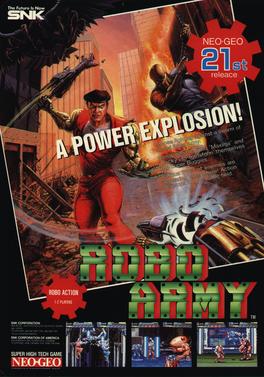
Robo Army is a beat 'em up video game developed and published by SNK that was released for Neo Geo arcades and home consoles in 1991 and the Neo Geo CD in 1995.
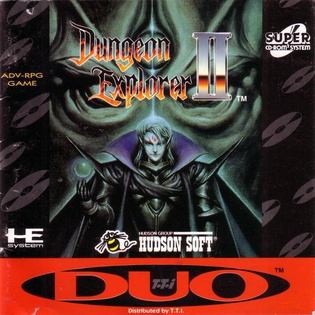
Dungeon Explorer II is an action role-playing video game developed and originally published by Hudson Soft for the TurboDuo in Japan on March 26, 1993, and in North America by Turbo Technologies in October of the same year. A sequel to 1989's Dungeon Explorer, it is the second installment in the eponymous franchise.
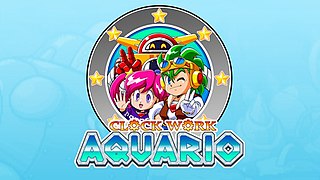
Clockwork Aquario is a platform game developed by Westone and published by ININ Games for the Nintendo Switch and PlayStation 4. The gameplay involves defeating waves of enemies, picking up power-ups and items, and destroying bosses across multiple levels to stop Dr. Hangyo from taking over the world.

Power Strike II is a 1993 vertically scrolling shooter video game developed by Compile and published by Sega for the Game Gear. An entry in the Aleste series, it is a follow-up to GG Aleste (1991). The game follows Alice Waizen piloting the Lance Bird space fighter craft to stop an unknown parasitic object attached to the armored defense satellite Algo. Its gameplay is similar to the previous Aleste entry on Game Gear, with the player fighting enemies and bosses, while avoiding collision with their projectiles and other obstacles.
